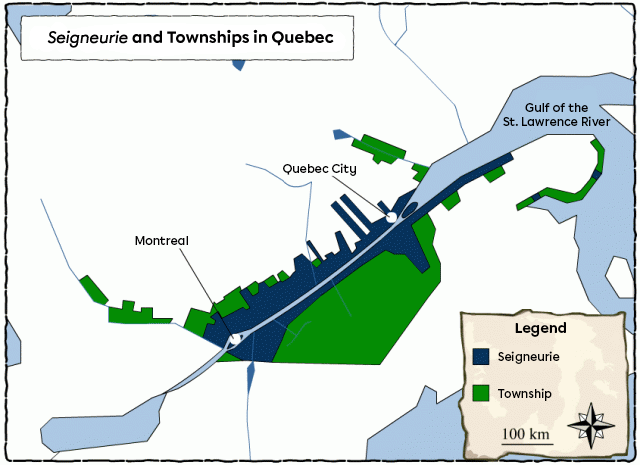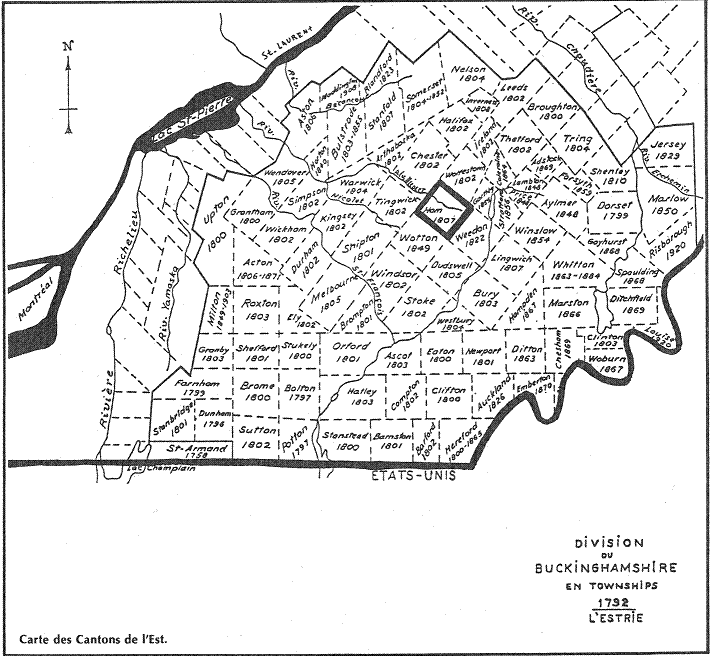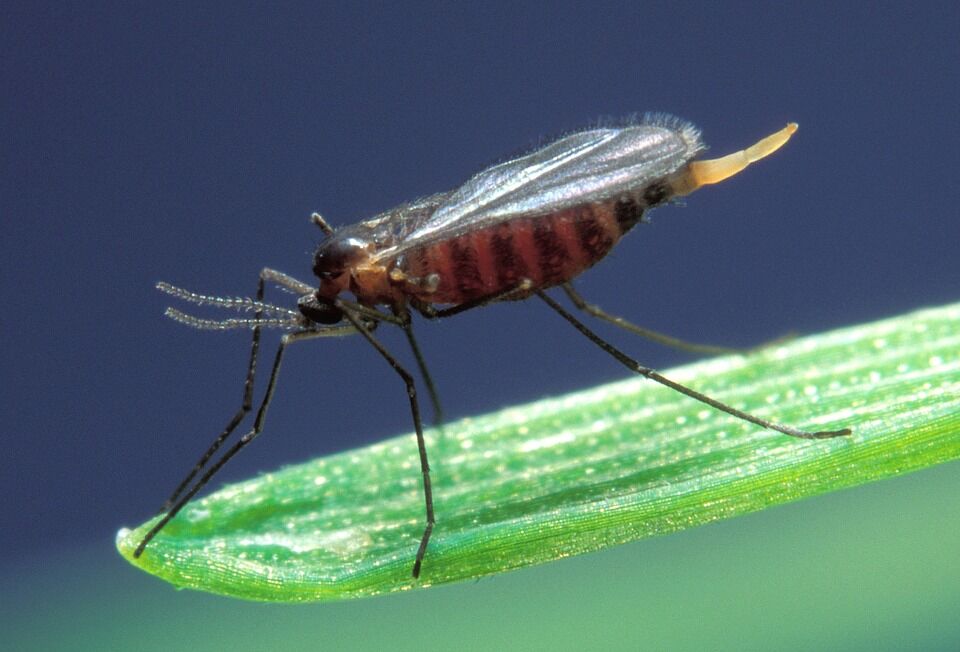In the late 18th century, agriculture was flourishing in both Canadas. The population in both the United Kingdom and the colonies was growing, meaning there were more mouths to feed. This growth quickly increased the demand for agricultural products. Most of Lower Canada’s crops were sold to local markets, but some were exported to the mother country.
Unfortunately, at the dawn of the new century, agriculture in Lower Canada was facing major problems, eventually leading to an agricultural crisis in the 1830s.
In Lower Canada, most farmers were Canadiens living in the seigneurial lands along the St. Lawrence River. British and Loyalist farmers were more likely to settle in the Eastern Townships.

Dunham was the first township in Lower Canada, founded in 1796. Several other townships were established later on. Since the Eastern Townships was located inland, road construction was needed to develop this region.

When Napoleon’s blockade ended, European countries were able to start trading with the United Kingdom again, increasing the supply of available wheat. The sudden abundance of this resource caused its value to drop. In order to compete, British farmers had to lower the prices of their agricultural products, reducing their income and making them poorer.
To protect its economy from foreign competition, the United Kingdom introduced a protectionist measure in 1815 called the Corn Laws.
Protectionism is an economic policy that a government implements to protect its economy from foreign competition.
A tax was added to the price of wheat from other countries, but not on wheat from the two Canadas. This meant wheat from the colonies was cheaper than wheat from other European countries. These taxes are referred to as preferential tariffs. British buyers wanted to pay as little as possible for their wheat, so they did more business with the Canadas.
These preferential tariffs were very beneficial to Upper Canada, whose quality and quantity of wheat production were much better than Lower Canada’s. As such, Upper Canada profited from the export of wheat grain and flour to the United Kingdom.
Preferential tariffs were duties that were lower for products imported from the colonies.
Lower Canada was unable to compete with Upper Canada in wheat exports to the United Kingdom. With the goal of exporting surplus wheat to Britain, many farmers in Lower Canada switched from subsistence farming to intensive farming, especially in the St. Lawrence Valley.
Much of this land had been farmed since the days of New France, but little was done to regenerate the soil, which was depleted. The wet and cool climate also made growing wheat difficult. On top of this, population growth caused the land in Lower Canada to become overpopulated by the early 19th century. The subdivided land was too small to support families, forcing them to leave the rural areas.
Lower Canada was already experiencing agricultural problems at the turn of the 19th century, eventually culminating in an agricultural crisis by the 1830s. During this crisis, Lower Canada’s wheat yields were so low that Lower Canada had to buy wheat from Upper Canada.
Several factors contributed to the situation, starting with the fact that the soil in the St. Lawrence Valley was depleted and less fertile due to a lack of manure and farming techniques. Other contributing factors in the crisis included especially cold weather and the invasion of the crop-destroying Hessian fly.
